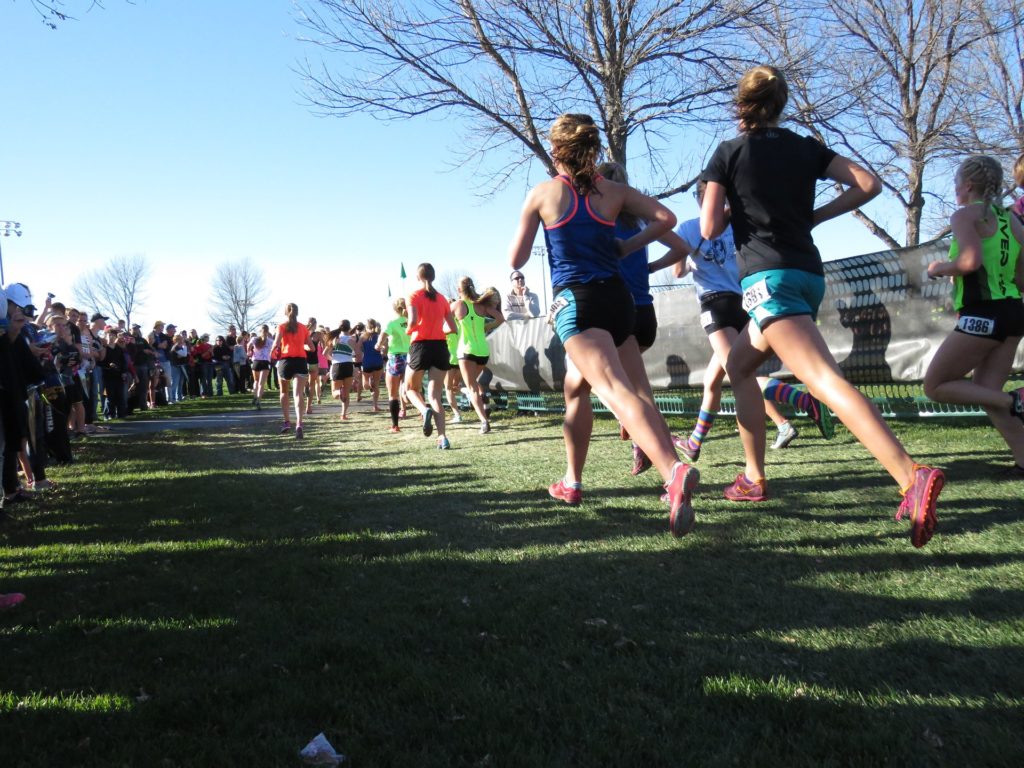- Calls to this hotline are currently being directed to Within Health, Fay or Eating Disorder Solutions
- Representatives are standing by 24/7 to help answer your questions
- All calls are confidential and HIPAA compliant
- There is no obligation or cost to call
- Eating Disorder Hope does not receive any commissions or fees dependent upon which provider you select
- Additional treatment providers are located on our directory or samhsa.gov
Recovering From the Female Athlete Triad: Effective Treatments

The Female Athlete Triad is the combination of low energy intake, amenorrhea (or absence of menstruation), and decreased bone mass density health in females.
Research shows that women who participate in sports that emphasize aesthetics or leanness, such as ballet, running, or swimming, are more apt to developing an eating disorder. Amenorrhea can be as high as 69% in these populations, compared to 5% in the general population [1]. Osteopenia in athletes has also been studied and results show ranges from 22% up to 50% in female athletes.
Both screening and diagnosis of the Female Athlete Triad can be challenging due to the fact that not all areas that are affected by the triad are readily apparent, or fully developed [1]. Screening and diagnosis require a physician to readily understand each component of the triad, as well as an understand the individual athlete.
Research suggests that the most efficient way to identify athletes is through sports physical exams, annual gynecological exams, or wellness checks [6]. If an athlete is believed to be at risk for the Female Athlete Triad, a referral should be made for evaluation with a treatment team.
Early Detection is Key
Early detection of the Female Athlete Triad is critical to identification and treatment. It has been found that screenings for successful identification can be done as part of the preparticipation physical evaluation on an annual basis at both the high school and collegiate levels.

Some questionnaires used are the Low Energy Availability in Females Questionnaire, RED-S Risk Assessment Model, and the Female Athlete Triad: Cumulative Risk Assessment [2]. Screenings can be done at anytime during the sport season if a professional, coach, or health care professional suspects that an athlete has developed triad-related conditions.
Typically in high school and collegiate settings, athletes that are struggling are first identified by their athletic trainer, teammates, or coach who have the most awareness of their training levels, performance, and teammate observations or reports. Typically, signs of the athlete showing triad-related concerns are progressive weight loss, disordered eating behaviors, and irritability. Other concerns are complaints about declining performance or overexercising behaviors, as well as overuse injuries.
If triad-related conditions are identified or suspected, the athlete needs to be assessment and managed by a healthcare professional knowledgeable in the Female Athlete Triad.
Main Purpose of Treatment
One of the main goals of treating the female athlete triad is to regain weight lost, with an improvement in overall nutritional and energetic status. If an eating disorder is present, then it is also emphasized in the treatment plan that the focus on modification of unhealthy attitudes, behaviors, and emotions related to food, body, and exercise needs to be addressed.
The optimal treatment for the triad needs to address the low energy availability or nutritional status of the athlete [3]. Nutritional counseling and increased diet and meal plan to restore normalization of body weight is essential for resumption of menses and improved bone health.
Researchers have found that if low energy is due to unintentional undereating, a referral for nutritional education is typically all that is needed. If the low energy is due to disordered eating, then a referral to a physician is needed in conjunction with nutritional counseling. If the low energy is due to a clinical eating disorder, treatment needs to include an evaluation and treatment with an eating disorder physician, nutritionist, and a mental health practitioner.
Treatment Teams are Essential for Recovery
Treatment plans for those with the triad vary depending on the individual’s presentation of the symptoms. Larger treatment goals include reversal of weight loss, return to body weight associated with normal menses, and weight gain to achieve BMI of 18.5 or greater.

Nutritional values vary depending on exercise and sport requirements. For some, there might be a cessation of the sport, or reduction in practices and games/competitions until weight is normalized and maintained. A multidisciplinary team approach is essential, and knowledge of athletes is preferable. A team should include a physician, a registered dietician, and a mental health professional. In younger athletes, inclusion of the family is critical.
Medication can be useful to treat osteoporosis and low bone density, or for those with multiple overuse injuries or fractures. Typical medications are combinations of estrogen and progesterone contraceptive therapy. It is important to note that a full evaluation of the underlying causes of the amenorrhea be evaluated prior to hormone therapy treatment.
Medication can also be useful for managing underlying mental health concerns, such as depression and anxiety. Vitamin D and calcium are also used for treatment of triad concerns.
One drug has been shown to be unhelpful in the treatment of increasing bone health. Typically, if nonpharmacologic treatment for menstrual disruption and low bone density is unsuccessful, oral estrogen may be used, but this drug, as mentioned previously, has not been shown to be beneficial [5].
Effective treatment recommendations include immediately focusing on the appropriate nutritional plan and modifying athletic training and exercise. Cognitive therapy is highly effective as it works with individuals to change negative thinking and behaviors around disordered eating, exercise, and body image. Nutritional counseling is also extremely beneficial due to weight restoration needs, and any supplements needed to restore bone health and menstruation.
In conclusion, the female athlete triad is a serious condition affecting many young women in sports. Throughout the recovery process, it is important to help the athlete feel respected and that her thoughts and opinions about the recovery plan are valued. With a team of experts working together, the goal of resuming a health lifestyle with success in their sport can be achieved.
 About the Author: Libby Lyons is a Licensed Clinical Social Worker and Certified Eating Disorder Specialist (CEDS). Libby has been practicing in the field of eating disorders, addictions, depression, anxiety and other comorbid issues in various agencies. Libby has previously worked as a contractor for the United States Air Force Domestic Violence Program, Saint Louis University Student Health and Counseling, Saint Louis Behavioral Medicine Institute Eating Disorders Program, and has been in Private Practice.
About the Author: Libby Lyons is a Licensed Clinical Social Worker and Certified Eating Disorder Specialist (CEDS). Libby has been practicing in the field of eating disorders, addictions, depression, anxiety and other comorbid issues in various agencies. Libby has previously worked as a contractor for the United States Air Force Domestic Violence Program, Saint Louis University Student Health and Counseling, Saint Louis Behavioral Medicine Institute Eating Disorders Program, and has been in Private Practice.
Libby currently works as a counselor at Fontbonne University and is a Adjunct Professor at Saint Louis University, and is a contributing author for Addiction Hope and Eating Disorder Hope. Libby lives in the St. Louis area with her husband and two daughters. She enjoys spending time with her family, running, and watching movies.
References:
[1] Nazem Taraneh, Ackerman, T. (2012). The Female Athlete Triad. Sports Health. Sports Health , (4), 302-311. Retrieved April 27, 2017, from https://www.ncbi.nlm.nih.gov/pmc/articles/PMC3435916[2] Thein-Nissenbaum, Jill; Hammer, E. (2017). Treatment Strategies for the Female Athlete Triad in the Adolescent Athlete Current Perspectives. Open Access Journal of Sports Medicine, (8),85-95. Retrieved April 27, 2017 from https://www.ncbi.nlm.nih.gov/pmc/articles/PMC5388220/
[3] (n.d.). Retrieved April 27, 2017, from http://www.ncaa.org/health-and-safety/nutrition-and-performance/treatment-female-athlete-triad
[4] (n.d) Retrived April 27, 2017, from https://www.sciencedaily.com/releases/2014/02/140217102457.htm
[5 ] (n.d.) Retrived April 27, 2017 from http://emedicine.medscape.com/article/89260-treatment
[6] (n.d.) Retrieved April 28, 2017, from https://breakingmuscle.com/learn/the-female-athlete-triad-screening-and-treatment-strategies
The opinions and views of our guest contributors are shared to provide a broad perspective of eating disorders. These are not necessarily the views of Eating Disorder Hope, but an effort to offer discussion of various issues by different concerned individuals.
We at Eating Disorder Hope understand that eating disorders result from a combination of environmental and genetic factors. If you or a loved one are suffering from an eating disorder, please know that there is hope for you, and seek immediate professional help.
Published on May 17, 2017.
Reviewed By: Jacquelyn Ekern, MS, LPC on May 17, 2017.
Published on EatingDisorderHope.com

The EatingDisorderHope.com editorial team comprises experienced writers, editors, and medical reviewers specializing in eating disorders, treatment, and mental and behavioral health.

